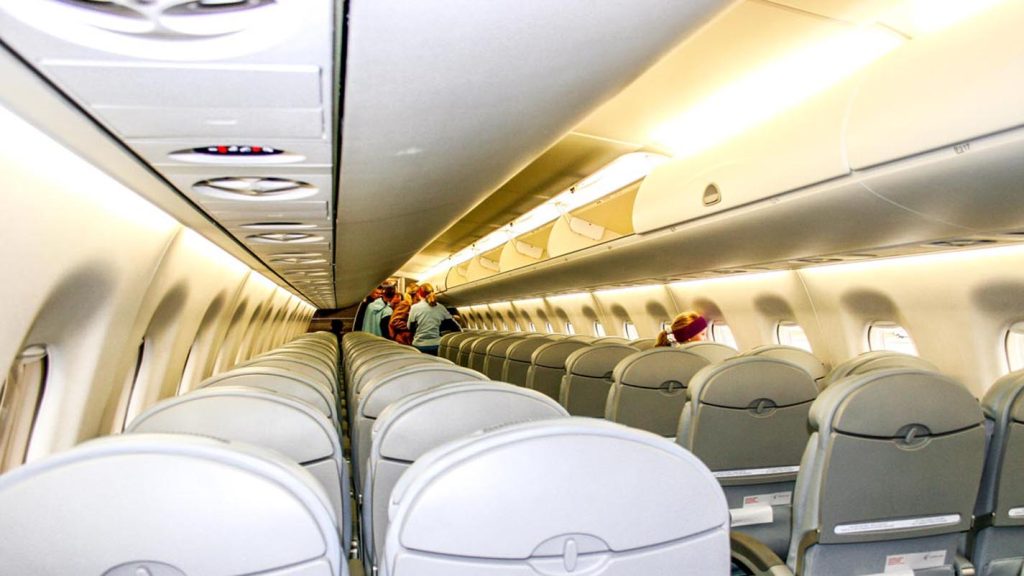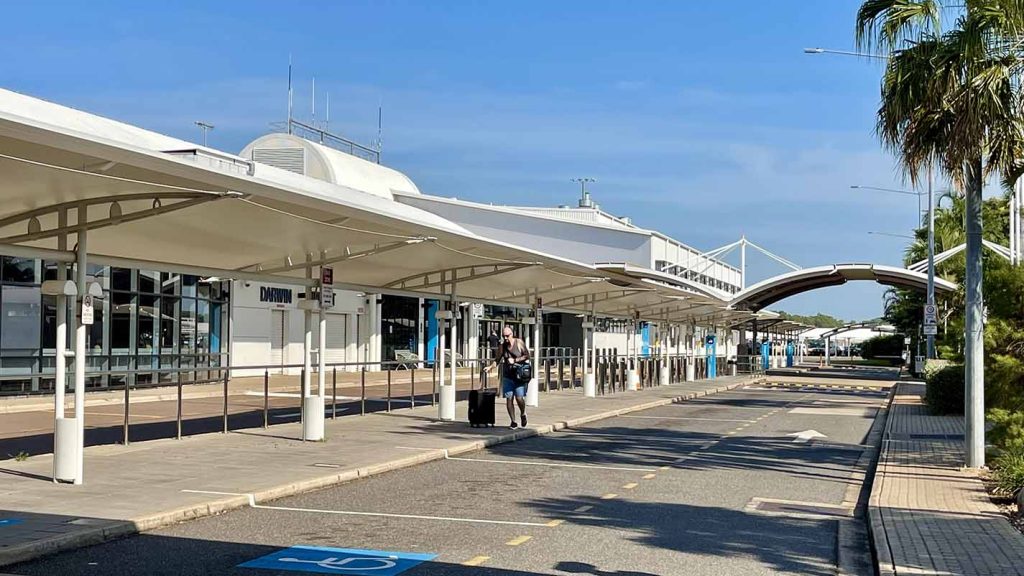Flying across the top of Australia offers a perspective that few truly consider. The journey between Cairns and Darwin may not rank among the most frequently discussed domestic flights, but it offers a tapestry of landscapes that captures the vast, untouched essence of northern Australia. When I booked my flight, the window seat was an afterthought. By the time the plane leveled off, I realized I had underestimated the value of that small pane of glass.
1. Booking the Flight
The flight from Cairns to Darwin spans roughly 1700 kilometers. I booked my ticket on Webjet, which conveniently compares multiple airlines at once. After reviewing flight times, baggage allowances, and layover options, I selected a direct flight with Airnorth. It wasn’t the cheapest option on the table, but it offered the benefit of a midday departure—ideal for maximizing visibility from the air.
What caught my attention on Webjet was the modest number of direct routes available. Many flights pass through Brisbane or even Sydney, adding considerable time to the journey. But the goal was clear: take a daytime flight, secure a window seat, and see what Australia’s Top End looks like from above.
2. Morning in Cairns
Waking up in Cairns, the tropical humidity greets you before you even reach the window. The city has its rhythm, but it’s a rhythm that never feels rushed. I had time to walk the Esplanade before heading to the airport, watching locals jog past palm trees while cockatoos shrieked from the canopy above.
Cairns Airport is small by international standards, but efficient and straightforward. I passed through security quickly and headed straight for the gate. From the lounge window, planes taxied lazily as storm clouds lingered distantly over the Coral Sea. The weather forecast had predicted scattered clouds—a perfect setup for dramatic lighting over the outback.
3. The Flight Begins
Boarding proceeded on time. The aircraft was an Embraer E170, a regional jet suited for short to medium-haul domestic travel. With only two seats per row, the configuration already felt more intimate. I took my place at 7A, directly over the wing but with a clear line of sight downward and forward.
The plane taxied smoothly onto the runway, and within minutes we were ascending through a hazy blue sky. Cairns quickly dropped away. The Great Dividing Range, which had loomed just inland from the coast, revealed itself fully once we gained altitude. Low-slung clouds moved across its slopes like fingers dragging mist through valleys.

4. The Tablelands and the Gulf Savannah
As the aircraft banked westward, the coastline disappeared behind us. The first major landmark was the Atherton Tablelands. From the air, these highlands present a checkerboard of cultivated land, rainforest pockets, and winding rivers. Fields of sugarcane stretched in rectangular precision, while small towns appeared as scattered clusters of red roofs.
The transition into the Gulf Savannah was swift and dramatic. The vivid greens of tropical Queensland began to fade into ochres and siennas. The terrain flattened into a harsh, mesmerizing sprawl. Rivers turned into braided veins across parched earth. I watched isolated billabongs shimmer like mirrors beneath the sun, surrounded by eucalyptus and acacia scrub.
At this altitude, the enormity of Australia’s uninhabited interior becomes unmistakable. For long stretches, there were no visible roads, no fences, no towns. Just nature—relentless, unapologetic, and raw.
5. The Barkly Tableland: Patterns of Isolation
An hour into the flight, we crossed into the Northern Territory. The Barkly Tableland unfurled below like a vast, sleeping animal. This region is cattle country, though from the air you’d struggle to see any livestock. Instead, you observe straight, artificial lines drawn through the wilderness—dirt access roads, fence grids, and long-forgotten boundary markers.
The land here seems frozen in geologic time. Low mesas cast elongated shadows, and dry riverbeds wind like ancient scars across red earth. Occasionally, I’d spot what looked like a runway—private airstrips, probably for station owners—but they passed beneath us in seconds, soon swallowed by bush again.
The palette outside the window had changed dramatically. Greens had become rust-reds, ochres, and muted yellows. Light reflected off ironstone ridges and dry salt pans, sometimes creating a glare that reminded me of snowfields, despite the heat below.
6. The Vastness of the Outback
Some passengers slept. Others read or scrolled through phones. But the view outside demanded attention. Unlike more populated regions, where landscapes shift rapidly from urban to suburban to rural, this was a canvas of endurance and stillness.
I spotted dry lightning flickering on the distant horizon, even though the sky above remained blue. The tropics are full of such contradictions. The air above us was calm, but below, I imagined gusts curling dust into spirals. Occasionally, the plane would tremble in mild turbulence, as if reminding us that even in the sky, the Outback’s hand can be felt.
7. Katherine from Above
Two hours in, the landscape started to change again. Rivers reappeared, more frequent now and flowing north. One of them was the Katherine River, winding its way past the town of Katherine. From the sky, the settlement looked like a leaf fallen in the wilderness—orderly, rectangular, and dwarfed by its surroundings.
The area around Katherine is greener, a shift from the starkness of the Barkly. Mango orchards, riverbanks, and scattered homesteads hint at human resilience in this demanding environment. I recognized Nitmiluk Gorge in the distance—its sandstone walls catching the afternoon sun. Though small from this height, its curves were unmistakable.
8. Descent into Darwin
Approaching Darwin, the land grew greener and more varied. Wetlands began to dominate—interrupted by mangrove swamps, floodplains, and the occasional glimpse of buffalo trails. The coast appeared again, and with it, a series of estuaries that fed into the Timor Sea.
Flying low over Darwin is an experience unto itself. The city sits on a peninsula surrounded by vivid blue water. You can see East Point Reserve, the Mindil Beach markets setting up tents, and sailboats gently rocking in Cullen Bay. Apartment buildings seem to rise straight from the jungle, but they do little to erase the memory of the wilderness we’d crossed to get here.
The landing was smooth. A soft thud announced our arrival, and soon the brakes hissed as we rolled to a stop. Tropical heat rushed in as the aircraft doors opened, thick and perfumed with eucalyptus, sea salt, and jet fuel.
9. Arrival and First Impressions
Darwin Airport, though compact, has a rhythm all its own. Tourists mingled with locals, many of whom wore high-vis vests, returning from mining operations or remote work in Arnhem Land. The terminal had a quiet energy, as if everyone there knew how far they’d come—whether from across the country or from the heart of the Outback.
I collected my luggage, which emerged efficiently on the belt. Outside, palm trees swayed under a sky stained gold by the late sun. My transfer was already waiting, and as we drove toward the city center, the scale of what I’d seen began to settle into memory.

10. The Window View: More Than Scenery
Reflecting on the flight, it became clear that what I’d witnessed wasn’t just landscape—it was time etched into earth. The view from the window told stories. Not loudly, but persistently. It showed where rainfall had carved patterns over millennia, where life clings stubbornly to dry riverbeds, and where human attempts at order dissolve into nature’s sprawl.
Many dismiss domestic flights in Australia as mere transit. But this journey between Cairns and Darwin offered something different. It was a moving painting, a lesson in perspective, and a reminder that Australia is a continent first, and a country second.
It’s one thing to read about the Outback. It’s another to see it laid out beneath you, vast and inscrutable, with each geological feature whispering its own name.
11. Details in the Distance
One of the unexpected joys was observing how colors shifted with the angle of the sun. At one point, red earth looked gold; moments later, it turned brown under a stray cloud. The play of light and shadow created an ever-evolving canvas.
A small, dry crater—likely the remains of a long-extinct volcanic vent—appeared suddenly and vanished. Salt pans revealed themselves with almost no warning, reflecting the sun like shattered glass. I even spotted a feral camel once, a solitary figure inching across the plain, leaving a faint trail behind it.
Every few minutes, a detail emerged that altered the scale. A cattle station, a water tank, an unpaved road—they served as reminders that the land was not empty. It was simply immense.
12. Mid-Flight Conversations
An older gentleman seated across the aisle noticed my persistent gaze out the window and struck up a conversation. He’d flown this route countless times while working in remote logistics. He pointed out the Carpentaria Highway far below and shared anecdotes about floods that had turned the road into a river.
His stories added depth to the scenery. He described how pilots sometimes circle over interesting formations for tourists. That didn’t happen on this flight, but the idea lingered. Flying here isn’t just about getting from A to B—it’s a moment to witness terrain that few traverse.
13. Beyond Practicality
A window seat may seem like a simple preference. For many, it’s just a matter of legroom, convenience, or habit. But when the journey cuts across one of the most remote and geologically ancient regions of the planet, that small rectangle of glass transforms into a theater screen.
There were no inflight movies. No internet. Yet, I didn’t miss either. The real entertainment was outside, unfiltered, unscripted, and entirely unforgettable.
14. Where the Sky Meets the Land
As we descended into Darwin, I thought about how this view would linger. It wasn’t just the colors, textures, or patterns. It was the scale. The patience of the land. The awareness that what lay below had changed slowly, over millions of years, and would continue to do so long after we’re gone.
Window views often go unnoticed. On this flight, they offered a kind of communion with the landscape—one that’s hard to find elsewhere. From the lush fringes of Cairns to the rugged heart of the Territory, this was more than a journey. It was a rare privilege to see a wild, weathered, and wide world unfold, one kilometer at a time.